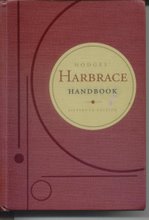The Bowl season is upon us. I've gone through life knowing truly nothing about golf and being happily oblivious to the endless tales of bogies, birdies and eagles that are the currency of the business world. The words below are strictly for those who are as oblivious to the terminology of football as I am to that of golf.
For example, we hear of the ominous "5-2 Monster" defense. This means there are five down linemen and two linebackers (defenders who stand in back of the line) who are complemented by a "Monster" back. The Monster -- or Rover, or Eagle, or Strong Safety -- is a person fast enough to be a defensive back and strong enough to come up and knock the crap out of running backs if they get past the line.
If you've ever seen the infrequent moments when UT junior Camille Chandler's dad, Jack, is vexed, you might gain some insight into his success as a strong safety at Vanderbilt. Why is he called a "strong safety"? Because he generally lines up opposite the "strong" side of the offensive line-- i.e., the side where the tight end lines up.
A blitz (from German Blitzkrieg, or "Lighting War") is the tactic of sending an extra person -- a linebacker or a safety -- charging into the backfield to sack the quarterback.
West Coast Offense: Basically, this is an offense based on short, quick passes that keep possession of the ball more than trying for longer gains on a regular basis. Its West Coast roots are partly the result of weather---when it's sunny and dry, you can throw and catch a ball reliably. One of its main avatars was the late Bill Walsh of Stanford and the San Francisco 49ers, where quarterback Joe Montana made it all look so easy. Lately, Walsh proteges have transplanted the West Coast offense in Green Bay and Minnesota. Go figure.
The Wishbone Offense: In less balmy parts of the county, howling winds and raging sleet make it important to keep the ball on the ground more, which is why the wishbone "option" offenses were developed on the plains of Oklahoma, Arkansas and Texas.
In the wishbone, the quarterback runs more, and there are three running backs behind him. On each play, the quarterback has several options:
1) to hand off the ball to a fullback running through the center of the line,
2) hand off to a halfback running off tackle,
3) keep the ball and run around the end, or
4) pitch the ball to the other halfback heading wide around the end.
[And, once in a blue moon, he can throw a pass!]
At each decision point, the quarterback "keys" on certain defensive players--that is, sees where they're going and sending the ball to the most undefended area. The wishbone was adopted by Alabama, except in years when Bama had great passers like Joe Namath and Ken Stabler. Troy Aikman first went to Oklahoma because coach Barry Switzer promised to switch from a wishbone to a West Coast offense. When Switzer changed his mind, Aikman tranferred to pass-happy UCLA.
Canadian football, with its frequent snowy conditions, tends to like running quarterbacks.
Subscribe to:
Post Comments (Atom)







No comments:
Post a Comment